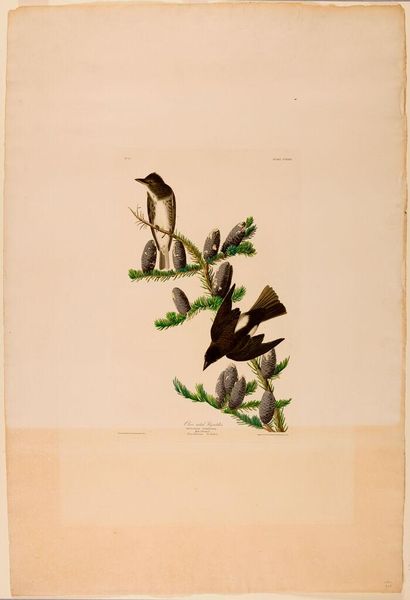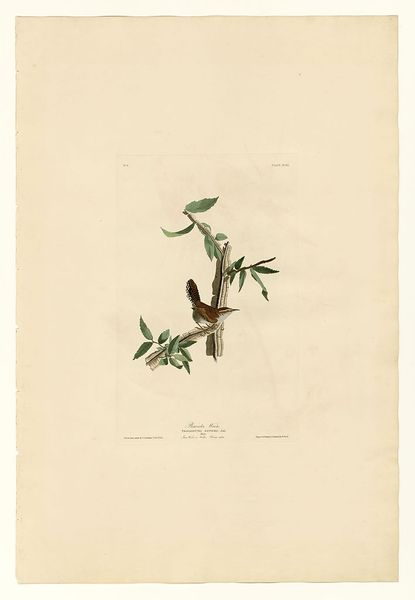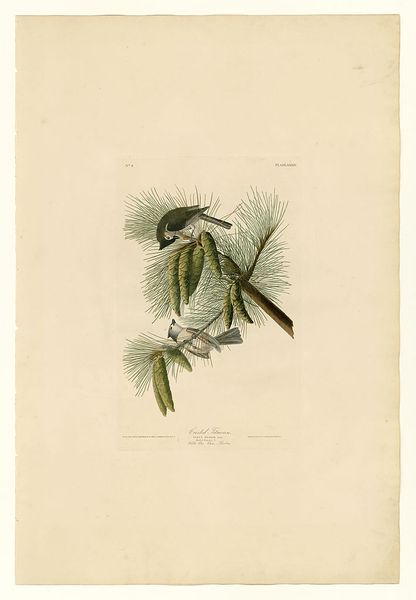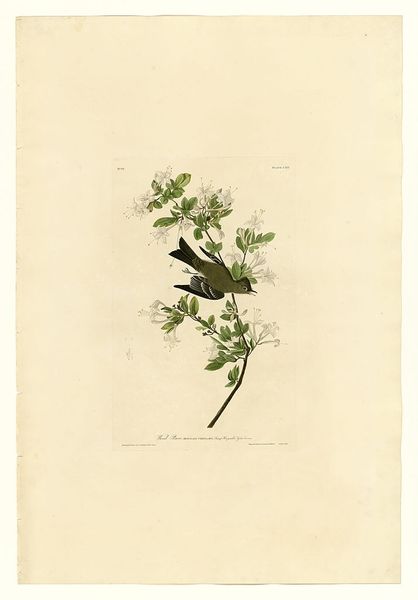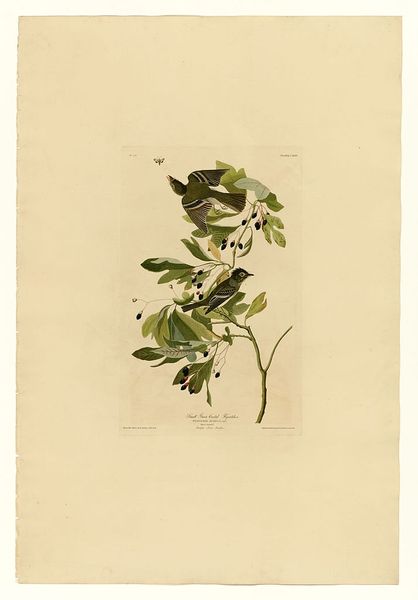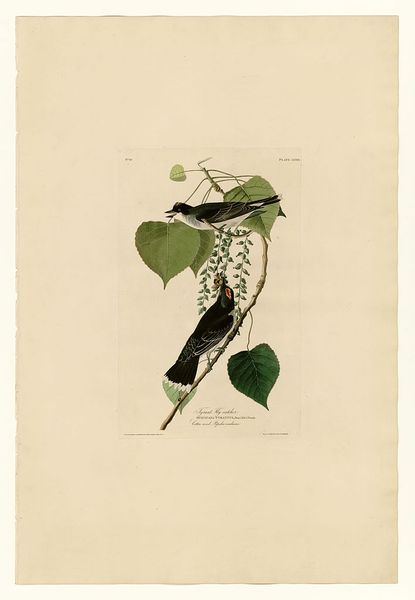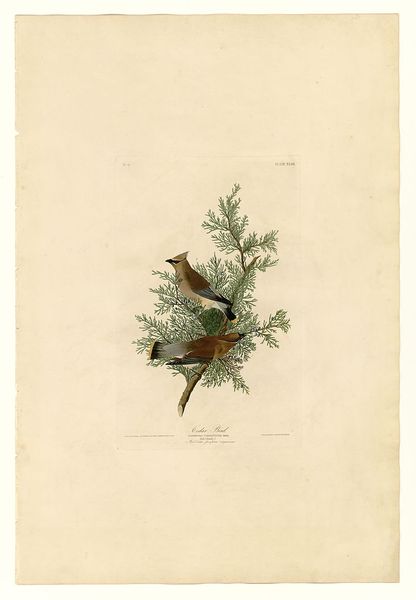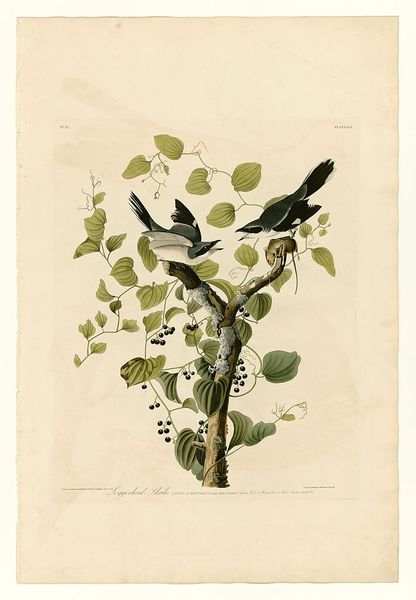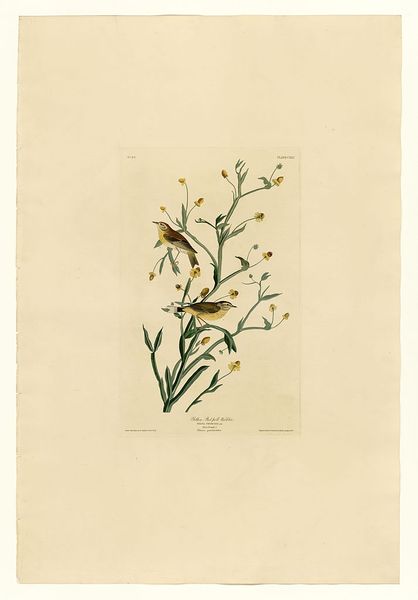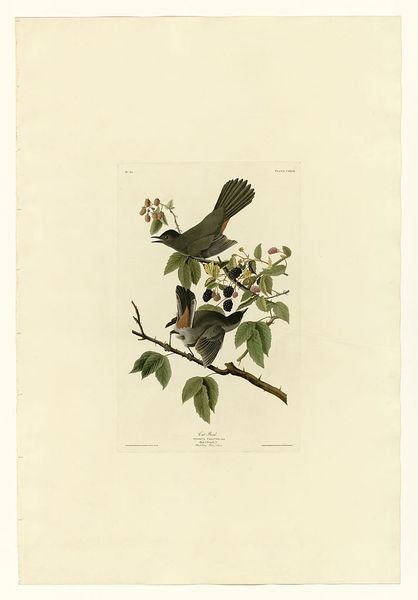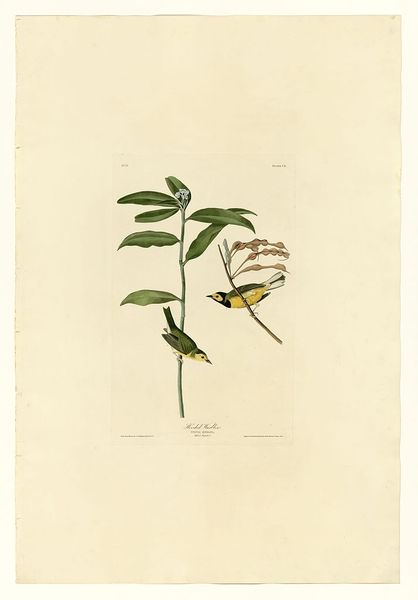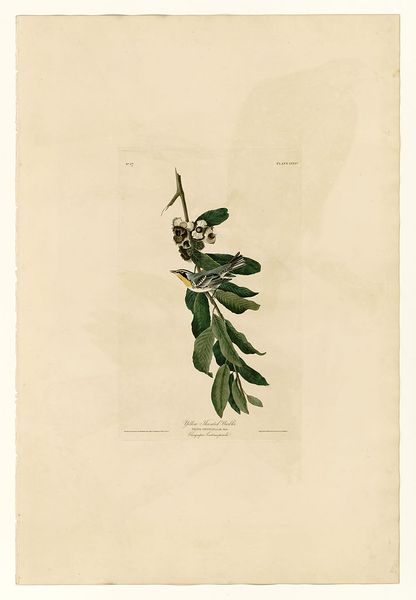
drawing, print, plein-air, paper, watercolor
#
drawing
# print
#
impressionism
#
plein-air
#
old engraving style
#
landscape
#
bird
#
paper
#
watercolor
#
plant
#
romanticism
#
sketchbook drawing
#
watercolour illustration
#
genre-painting
#
botany
Copyright: Public domain
Curator: Ah, yes, “Plate 174, Olive-sided Flycatcher” a print and watercolor drawing by John James Audubon. It certainly makes a delicate statement. Editor: Statement is right. It hits you immediately, doesn’t it? That stark contrast, the bird’s almost operatic swoop...it’s melodramatic in a good way. It makes me want to write a sad, beautiful poem. Curator: It does capture movement beautifully. Audubon was known for depicting birds in dynamic poses, trying to capture life in its fullest expression. The choice to show one bird static and one diving, seems intentional in contrasting perspectives. What do you make of the details on display here? Editor: The stark realism, that precision! But also the soft wash of watercolor… There’s a tenderness to it that tempers the drama. And those pinecones—almost gothic, really. It's beautiful but also kind of foreboding. Curator: Interesting, that gothic read. Typically, naturalists wanted their illustrations to convey scientific accuracy more than emotional affect, but Romanticism still lingers. The weight of the image leans on dark romanticism for a certain interpretation; it evokes melancholy through symbols like birds in isolation and austere landscapes. Editor: Yes, melancholy. A little death wish-y, if you ask me! Maybe because it feels so fragile, you know? Paper, watercolor… all these transient things trying to pin down something wild. It speaks to the struggle of containing something untamable. It wants to break out. Curator: You’re drawing an important link. Romanticism sought out authenticity by any means necessary, by capturing something untamed like raw, honest emotions. This can include the experience of awe, beauty, and fear when grappling with the natural world. Perhaps the very ephemerality of watercolor serves as an allegorical shorthand. Editor: Absolutely. Plus, look at the pose of the lower bird - diving down, like falling, with wings askew! The tragedy implied there, so beautiful, a still moment extracted from life's broader flow. I keep seeing a narrative! Curator: Or, at least, you can see a potential narrative embedded within it. Certainly, this intersection of naturalist illustration and art yields interesting observations. Editor: Makes you think about what the essence of 'art' is in that moment! Curator: Yes, or rather the artist. Editor: Definitely. Food for thought!
Comments
No comments
Be the first to comment and join the conversation on the ultimate creative platform.
